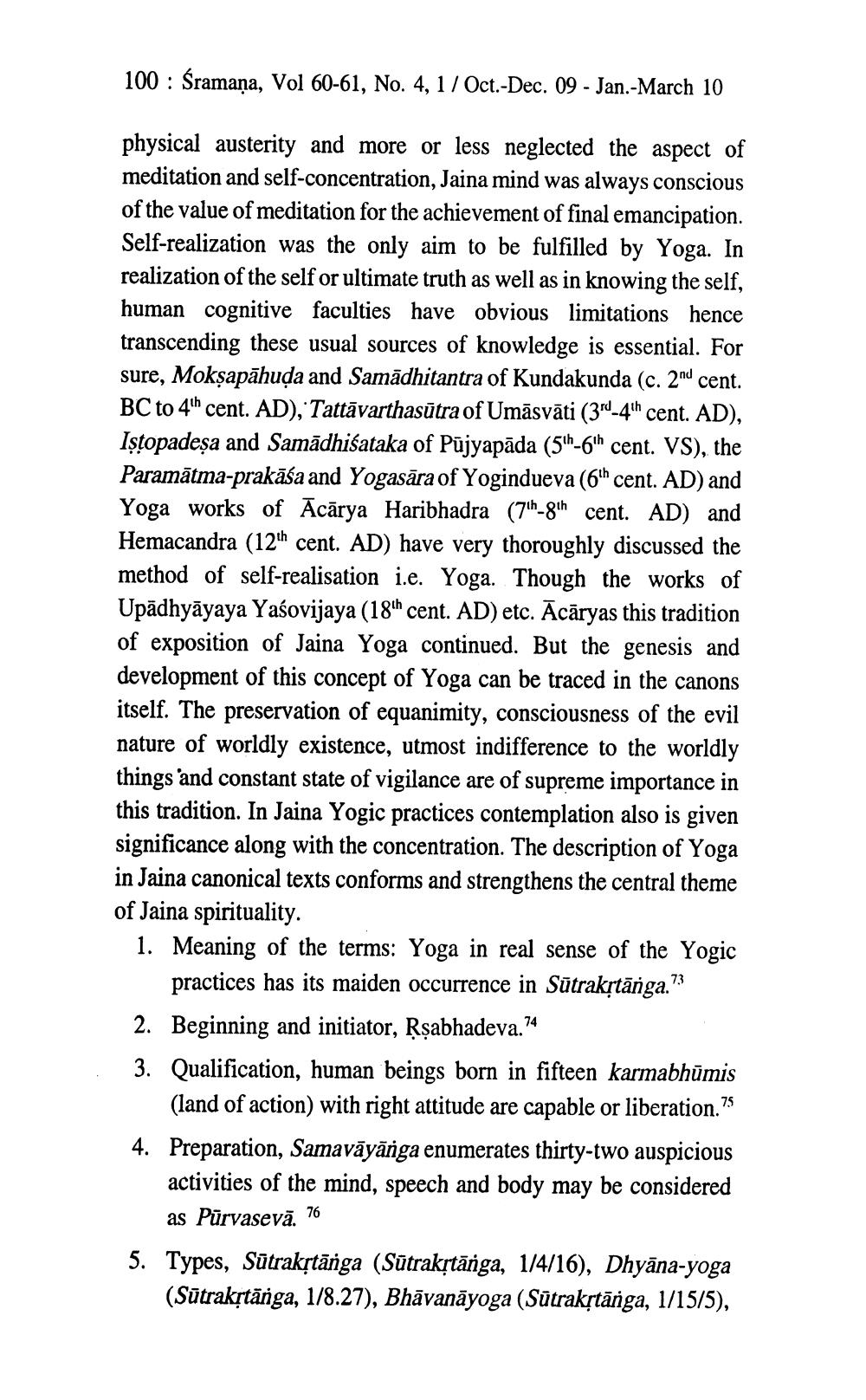________________
100 Śramana, Vol 60-61, No. 4, 1/ Oct.-Dec. 09 - Jan.-March 10
physical austerity and more or less neglected the aspect of meditation and self-concentration, Jaina mind was always conscious of the value of meditation for the achievement of final emancipation. Self-realization was the only aim to be fulfilled by Yoga. In realization of the self or ultimate truth as well as in knowing the self, human cognitive faculties have obvious limitations hence transcending these usual sources of knowledge is essential. For sure, Mokṣapahuḍa and Samadhitantra of Kundakunda (c. 2nd cent. BC to 4th cent. AD), Tattāvarthasūtra of Umāsvāti (3rd-4th cent. AD), Iṣṭopadeṣa and Samadhiśataka of Pujyapada (5th-6th cent. VS), the Paramātma-prakāśa and Yogasāra of Yogindueva (6th cent. AD) and Yoga works of Acarya Haribhadra (7th-8th cent. AD) and Hemacandra (12th cent. AD) have very thoroughly discussed the method of self-realisation i.e. Yoga. Though the works of Upadhyayaya Yasovijaya (18th cent. AD) etc. Acāryas this tradition of exposition of Jaina Yoga continued. But the genesis and development of this concept of Yoga can be traced in the canons itself. The preservation of equanimity, consciousness of the evil nature of worldly existence, utmost indifference to the worldly things and constant state of vigilance are of supreme importance in this tradition. In Jaina Yogic practices contemplation also is given significance along with the concentration. The description of Yoga in Jaina canonical texts conforms and strengthens the central theme of Jaina spirituality.
1. Meaning of the terms: Yoga in real sense of the Yogic practices has its maiden occurrence in Sūtrakṛtānga." 73
2. Beginning and initiator, Rṣabhadeva.74
3. Qualification, human beings born in fifteen karmabhūmis (land of action) with right attitude are capable or liberation.75 4. Preparation, Samaväyänga enumerates thirty-two auspicious activities of the mind, speech and body may be considered as Pūrvasevā. 76
5. Types, Sūtrakṛtānga (Sūtrakṛtānga, 1/4/16), Dhyana-yoga (Sūtrakṛtānga, 1/8.27), Bhāvanāyoga (Sūtrakṛtānga, 1/15/5),




